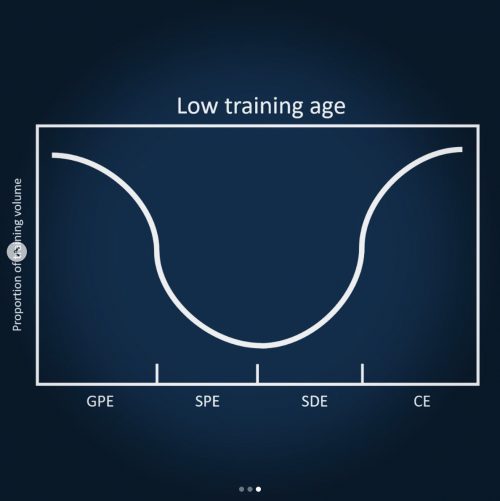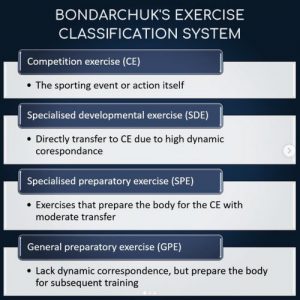Specialisation refers to training with a narrow focus, directly linked to the actions and movements used within a sport itself. There has long been a debate as to what age youth athletes should start specialising, if at all. However, I feel that “age” is a bit of a loose term. It provides no real insight into an athlete, of any biological age, experience or sport. Specialising, in a strength and conditioning scenario, should closely link to training age.
What is Training Age?
Training age refers to the amount of time and exposure an athlete has had to structured, coached and progressive training. It has nothing to do with chronological or biological age. For example, you may have an 18 year old and a 32 year old with the exact same exposure to structured training. Whether this is 0 or 5 years experience is irrelevant. To me, they should be treated the same (within the context of exercise selection and programming).
Bondarchuk’s Exercise Classification System
A great way to understand how to apply programming to athletes with different training ages is Bondarchuk’s exercise classification system. Athletes with lower training ages with get the most benefit from general physical preparedness. In contrast, a more experienced athlete will require greater levels of specialised training. This is due to the law of diminishing returns. The more development achieved, the greater the stimulus required to continue that progress.
It is important to mention that while athletes with higher training ages need greater specialisation, things must still be simple. You want to provide the greatest return from the most basic and manageable approach.
What Does this Mean For Training?
Whether I am working with a Strength and Conditioning Client or Personal Training in Surrey, training will be based on prior experiences. This means that the majority of people will sticking to the basics! Push, pull, squat, hinge, rotate, jump and land. You can go a long way while still mastering the basics!

